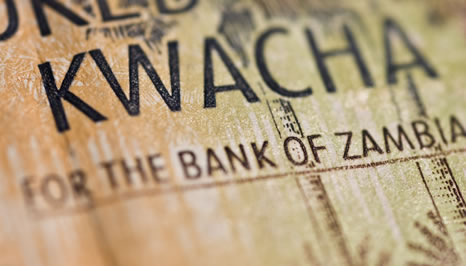Zambia's central bank left its policy rate steady at 10.25 percent, saying inflation is still expected to remain above the upper bound of its target range for much of the forecast horizon but then revert to the range toward the end this period amid a weakening of near-term growth prospects.
However, the Bank of Zambia (BOZ), which raised its rate 50 basis points in May as inflation was forecast to remain above its target range of 6.0 - 8.0 percent, cautioned it "may adjust the Policy Rate upward, if inflation does not revert to the target range."
In addition to recent data that points toward reduced economic growth, BOZ said liquidity challenges and constrained aggregate demand continue to weigh on economic activity, with gross domestic product projected to decline this year due to the effects of drought on agriculture, constrained electricity generation and lower than anticipated output from mining.
BOZ didn't issue a growth forecast but last month the International Monetary Fund said Zambia's growth was projected to slow to 2.0 percent this year from an estimated 3.7 percent last year, reflecting a decline in mining activity and the impact on drought on hydro power production.
BOZ said preliminary data show economic growth easing to 2.6 percent in the first quarter of this year from 2.7 percent in the same 2018 quarter, with data pointing to reduced growth in the second quarter.
Zambia's inflation rate has accelerated this year due to a depreciation of the kwacha and higher food prices, pushing up inflation from an average 7.0 percent in 2018 to to 8.8 percent in July.
BOZ expects inflation to remain above its 8.0 percent inflation limit for much of the forecast period due to a persistent rise in food prices from low agricultural output. But easing pressure on food prices is then expected to lower inflation toward the end of the forecast period.
Key upside risks to this outlook stem from persistent drought, lower electricity generation, higher-than-expected fiscal deficits and elevated debt service payments, which is likely to impact inflation through the exchange rate and expectation channels.
In addition, BOZ said weaker-than-projected global growth, partly due to an escalation of trade tensions between the US and China, is likely to impact copper prices, which may also affect the kwacha's exchange rate.
After falling 15.6 percent against the U.S. dollar last year, the kwacha has continued to weaken this year and was trading at 13.12 to the dollar today, down almost 9 percent this year.
The IMF in July forecast inflation would average 9.9 percent this year and 10.0 percent in 2020.






























